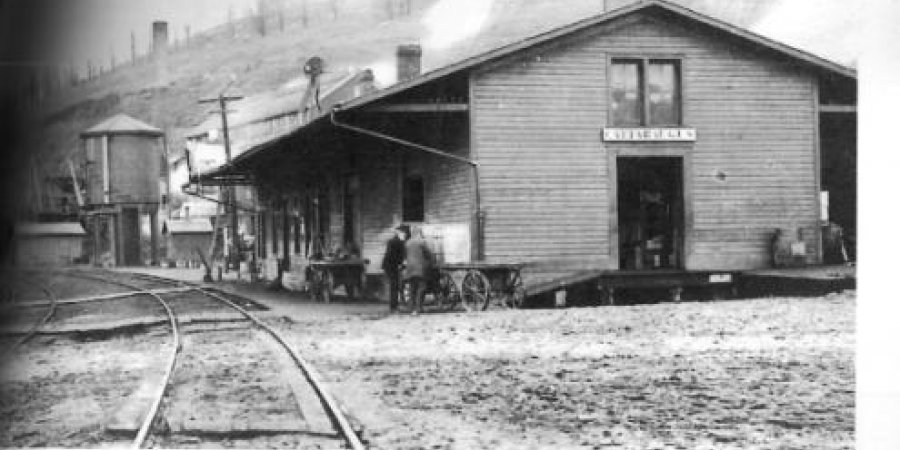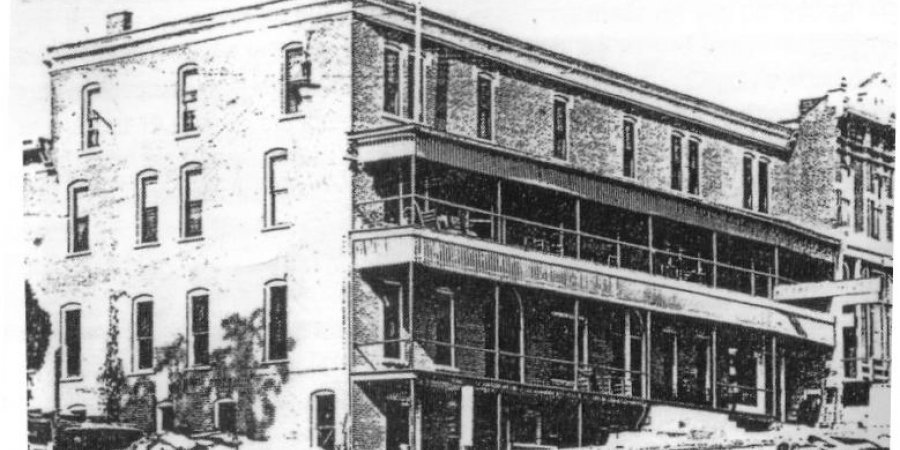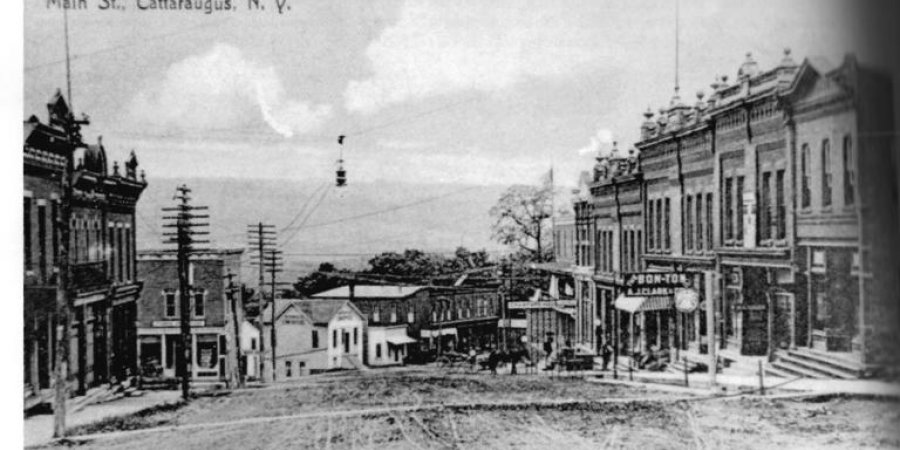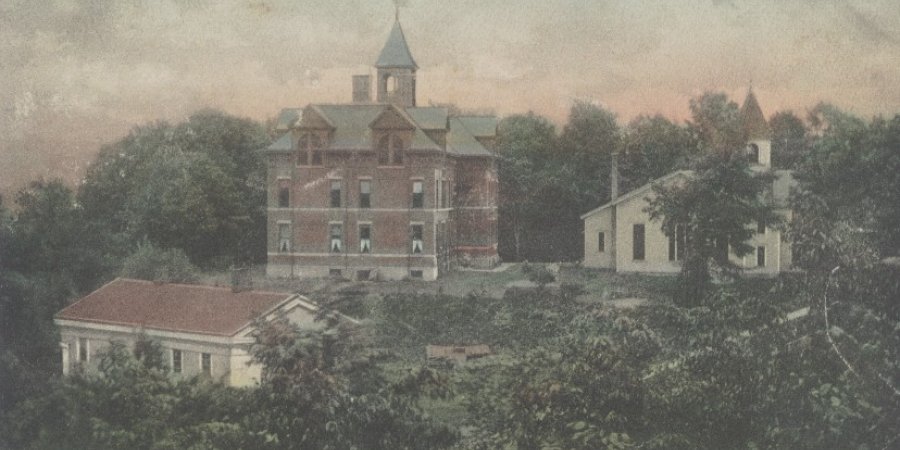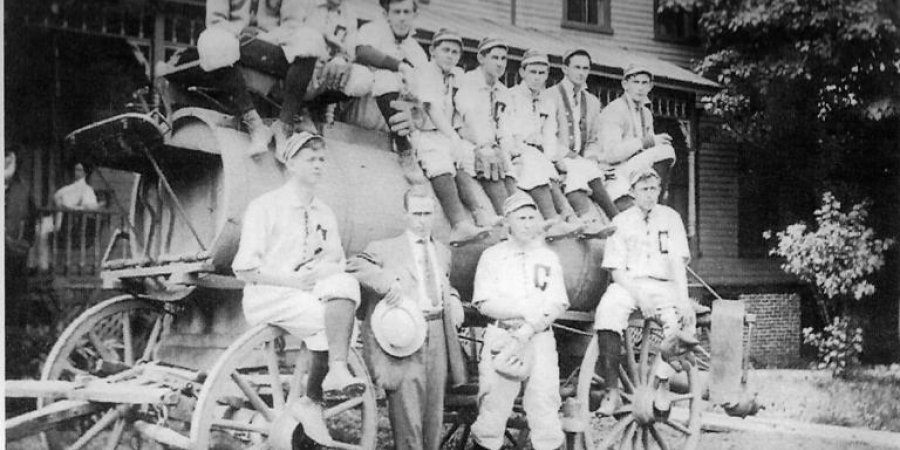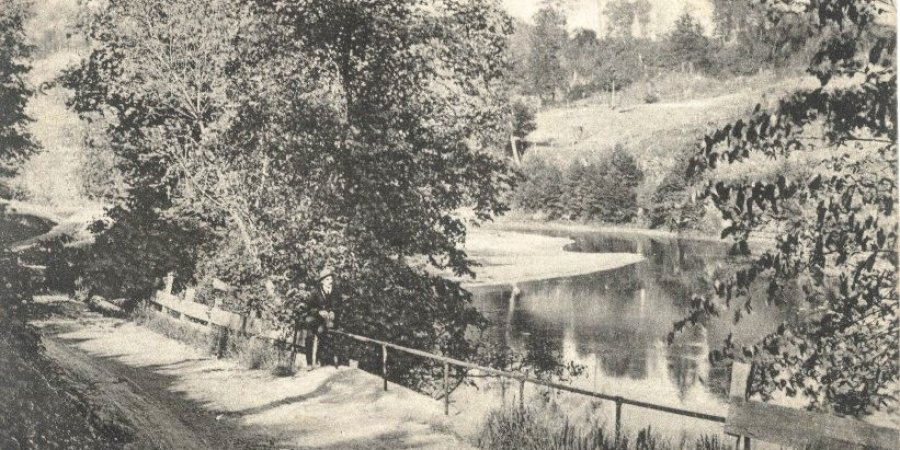Visiting Cattaraugus, New York is like taking a step back in time. Many of the buildings pictured above look similar. The porches are gone from the Crawford House and windows to keep out the elements have replaced the original. Yet Main Street is easy to recognize although the brick road is definitely an improvement over the dirt surface. You may even see a horse and buckboard tied to one of the lamp posts these days. The local Amish travel into town to do business in the Bank of Cattaraugus. The electric poles may appear a bit different and some of the roofline trim of the buildings may have sustained some loss of decorative elements through the years. The school has changed radically and it sad that the charming building pictured no longer exists. Yet this small town is very much like the picture, the pace slows, friendly small town shopkeepers greet visitors warmly, taking time to talk a spell when you visit their buildings and businesses.
Pat Cullen, President of the Bank of Cattaraugus http://www.bankofcattaraugus.com/ tells us: “That in 1828 brothers Calvin and Arad Rich courageously relocated their families to the valley and surrounding hills around what is now Cattaraugus Village. The area became known as rich Valley, not just because of the prolific Richs but also because of the fertile soil and the year-round stream of water that coursed through the valley. “
Pat continues the history of the village, “With the impending completion of the Erie Canal, President Andrew Jackson championed the effort to develop the interior with legislation he supported. This effort led directly to the planning of a railroad to connect the Hudson River with Lake Erie…when this New York and Lake Erie Railway was completed in 1851, it wasn’t merely a new railroadd. It was the longest rail line in the entire world…The railroad came through Rich Valley. This new village was named Cattaraugus by President Millard Filmore, himself, in honor of the name of the county.
Cattaraugus still offers many opportunities including the The American Cutlery Museum also you will find place to get your hair cut and style, the choice of a couple of diners, a pharmacy, a hardware store, the Historical Society must be contacted for an appointment to view the contents. Recently that group move one of their premium items to the library. The 8 foot tall Staute of Liberty was move from the Cattaraugus Historical Society to the Cattaraugus Free Library making viewing access available to the public. A one page handout is available to read about the immigrant, his family and carving. More information is available at the front desk.The library looks across the street at the bank. The library sprts a bright interior with many books and an impressive array of video cassettes. High speed computers await you signing in to use. Look around the village busiess district is small, but a delightful. The Trading Post South is taking care of individuals who need a boost in today’s economy. Of course the bank is standing there open for business as it has been since the 1800s. The Corner Drug Store stills serves the public's wellness needs.
As you are driving out of town on Rt. 353 towards Little Valley the railroad that was the beginning of it all can be seen across from the fire hall . The building next to the RR tracks is Setterstix , http://www.setterstix.com/ where the paper sucker sticks are still being made.
Information from Patrick Cullen, Cattaraugus County Bicentennial History (1808-2008), Edited by Maggie Fredrickson; assisted by Bruce Fredrickson with Cattaraugus County Village Town and City Historians, Little Valley, NY, 2008
Submitted by Sue Cross, Town of Mansfield Historian

